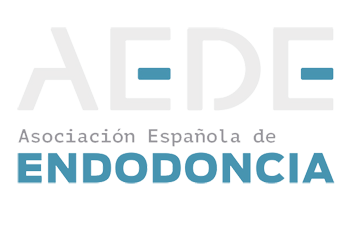RESUMEN
El objetivo del tratamiento de conductos consiste en prevenir o curar la periodontitis apical, lo que se logra mediante una correcta preparación quimiomecánica,junto a un sellado tridimensional. Una imagen radiolúcida periapical de gran extensión, indicativa de una gran lesión inflamatoria periapical,supone un reto para el clínico. Un buen diagnóstico, un buen planteamiento y comunicación con el paciente, contribuirán, junto a la realización de uncorrecto tratamiento de conductos, a la consecución del éxito clínico.A continuación presentamos un caso clínico de un paciente joven, con antecedente traumático, que acude a la consulta para la realización de untratamiento de conductos previo a la intervención quirúrgica que tiene programada. Tras establecerse el diagnóstico de necrosis pulpar de los dientes31, 41 y 42 y periodontitis apical sintomática del diente 42 por reagudización de un proceso inflamatorio periapical crónico, se procede al tratamientode conductos. A los 24 meses, el paciente se presenta asintomático, con ausencias de signos y síntomas, y con una clara disminución de la lesión enla radiografía de control.
PALABRAS CLAVE
Tratamiento de conductos; Lesión laterorradicular; Desinfección; Seguimiento.
ABSTRACT
Root canal treatment aims to prevent or cure apical periodontitis through a proper chemo-mechanical preparation and three-dimensional sealing. Wide periapicalradiolucencies, indicative of a large periapical inflammatory lesion, are a challenge for the clinician. A proper diagnosis, a good approach and communication withthe patient, together with an appropriate root canal treatment, provide the achievement of clinical success. A case of a young patient with a traumatic history,suffering pulp necrosis of teeth 31, 41 and 42 and symptomatic apical periodontitis of 42 tooth, is reported. After 24 months follow-up, patient is asymptomatic,with absence of signs and symptoms, and an evident reduction of the periapical lesion in x-ray control.KEY WORDSRoot canal treatment; Large periradicular lesion; Disinfection; Follow-up.








